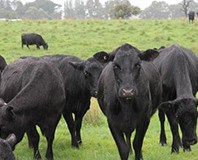Read the latest information on
Foot-and-mouth disease
 The voluntary Johne’s Beef Assurance Score (J-BAS) has been developed to assist beef cattle producers in identifying the risk of Johne’s disease (JD) occurring in a herd.
The voluntary Johne’s Beef Assurance Score (J-BAS) has been developed to assist beef cattle producers in identifying the risk of Johne’s disease (JD) occurring in a herd.
Transitional arrangements for J-BAS end on 1 July 2017 and cattle producers across Australia are urged to implement an on-farm biosecurity plan in order to maintain their current J-BAS. J-BAS is managed by Animal Health Australia (AHA) on behalf of the Cattle Council of Australia (CCA), who represent the industry.
In an important update for producers, herds with a transition score of J-BAS 7 or 8 will revert to a J-BAS 6 rather than J-BAS 0, if no on-farm biosecurity plan is in place by 1 July 2017.
“CCA have taken on-board feedback and altered the J-BAS score to alleviate producer concerns regarding loss of domestic market sales. This doesn’t change the focus of the new direction – cattle producers are still encouraged to treat JD as one of the many diseases they must manage within their business,” says Dr Rob Barwell, Acting Executive Manager Biosecurity and Product Integrity Services at AHA.
“We’d like to acknowledge all livestock stakeholders, including agents, for their excellent work in spreading the on-farm biosecurity message to Australian cattle producers – a message we’re keen for all invested parties to continue sharing.
“It’s important to remember that key to this new framework is the implementation of robust biosecurity practices; practices which will safeguard the profitability of the cattle producer,” says Dr Barwell.
To assist producers with developing their biosecurity plans, AHA has updated its Farm Biosecurity Plan page to include a range of biosecurity planning resources. The same on-farm planning template can be used for the Livestock Production Assurance program and J-BAS, with producers who have a JD focus required to complete the optional JD questions.
As the Australian cattle industry finalises the transition to a new framework for managing JD, producers are encouraged to implement their on-farm biosecurity plans.